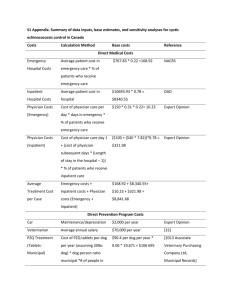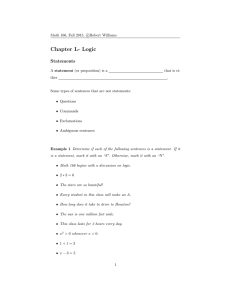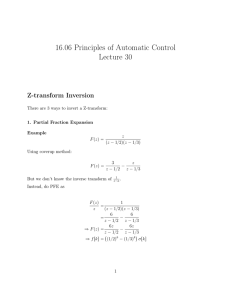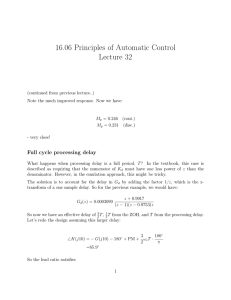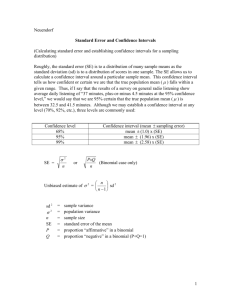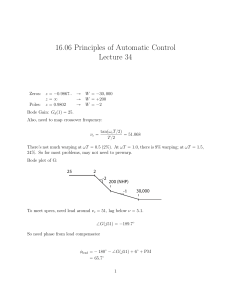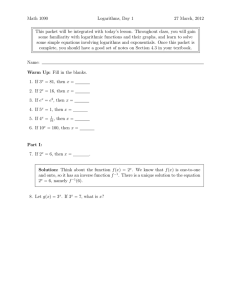Utility Expected Denti Tommaso
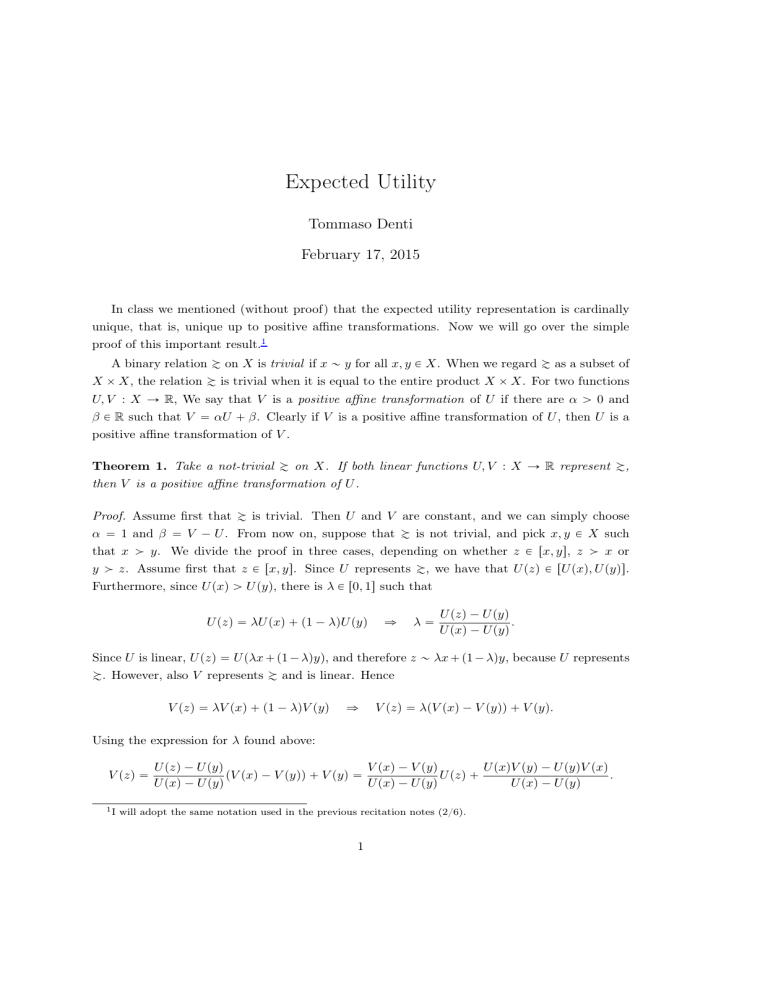
Expected Utility
Tommaso Denti
February 17, 2015
In class we mentioned (without proof) that the expected utility representation is cardinally unique, that is, unique up to positive affine transformations. Now we will go over the simple
proof of this important result.
A binary relation Á on X is trivial if x „ y for all x, y P X . When we regard Á as a subset of
X ˆ X , the relation Á is trivial when it is equal to the entire product X ˆ X . For two functions
U, V : X Ñ R
, We say that V is a positive affine transformation of U if there are α ą 0 and
β P R such that V “ αU ` β . Clearly if V is a positive affine transformation of U , then U is a positive affine transformation of V .
Theorem 1.
Take a not-trivial Á on X . If both linear functions U, V : X then V is a positive affine transformation of U .
Ñ R represent Á ,
Proof. Assume first that Á is trivial. Then U and V are constant, and we can simply choose
α “ 1 and β “ V ´ U . From now on, suppose that Á is not trivial, and pick x, y P X such that x ą y . We divide the proof in three cases, depending on whether z P r x, y s , z ą x or y ą z . Assume first that z P r x, y s . Since U represents Á , we have that U p z q P r U p x q , U p y qs .
Furthermore, since U p x q ą U p y q , there is λ P r 0 , 1 s such that
U p z q “ λU p x q ` p 1 ´ λ q U p y q ñ λ “
U p z q ´ U p y q
U p x q ´ U p y q
.
Since U is linear, U p z q “ U p λx ` p 1 ´ λ q y q , and therefore z „ λx ` p 1 ´ λ q y , because U represents
Á . However, also V represents Á and is linear. Hence
V p z q “ λV p x q ` p 1 ´ λ q V p y q ñ V p z q “ λ p V p x q ´ V p y qq ` V p y q .
Using the expression for λ found above:
V p z q “
U p z q ´ U p y q
U p x q ´ U p y q p V p x q ´ V p y qq ` V p y q “
V p x q ´ V p y q
U p x q ´ U p y q
U p z q `
U p x q V p y q ´ U p y q V p x q
U p x q ´ U p y q
.
1
I will adopt the same notation used in the previous recitation notes (2/6).
1
Therefore we set
α “
V p x q ´ V p y q
U p x q ´ U p y q ą 0 and β “
U p x q V p y q ´ U p y q V
U p x q ´ U p y q p x q
.
So we have just shown that V p z q “ αU p z q ` β whenever z P r x, y s . Using the same methodology, you can verify that V p z q “ αU p z q ` β also when z ą x or y ą z , completing the proof.
Curiosity: A somehow related result is that there are no “proper followers” among expected utility maximizers. Take two preference relations Á
1 of Á
1 if, for all x, y P X , and Á
2 on X . We say that Á
2 is a follower x Á
1 y ñ x Á
2 y.
If we regard of Á
2
Á
1 and Á
2 as subsets of
. Notice that, when Á
2
X ˆ X , then Á
2 is a follower of Á
1 whenever Á
1 is a follower of Á
1
, we must have that, for all x, y P X , is a subset x „
1 y ñ x „
2 y.
However, it may happen that x ą
1 y and x „
2 y .
Proposition 1.
Take Á
1 and Á
2 on X which satisfy A1, A2 and A3. If Á
2 is a follower of Á
1
, then either Á
2 is equal to Á
1 or Á
2 is trivial.
Proof. We will show that if Á
1 that Á
1 is different from Á
2
, then Á
2 must be trivial. Assume therefore is different from Á
2
, that is, there are x, y P X such that x ą
1 y but x „
2 y (why?).
Since both Á
1 and Á
2 satisfy A1, A2 and A3, by the Mixture Space Theorem we can find linear functions for all z
U
1
, U
2
: X Ñ R representing Á
1 and Á
2
, respectively. We will show that U
2 p z q “ U
P X , which means that Á
2 is trivial. We divide the proof in three cases: x Á
1 z Á
2 p y q
1 y , z ą
1 x and y ą
1 z .
Case 1: x Á
1 z Á
1 y . Since Á
2 transitivity it must be that z „
2 y is a follower of
, and therefore
Á
U
2
1
, then x Á p z q “ U
2
2 p y q . z Á
2 y . Since x „
2 y , then by
Case 2: z ą
1 x . Since U
1 p x q P p U
1 p z q , U
1 p y qq , we can find α P p 0 , 1 q such that
U
1 p x q “ αU
1 p z q ` p 1 ´ α q U
1 p y q .
By linearity, x „
1 x „
2
αz ` p 1 ´ α q y
αz ` p 1 ´ α q y.
Since Á
2
. Therefore by linearity of U is a follower of
2
:
Á
1
, it must be the case that
U
2 p x q “ αU
2 p z q ` p 1 ´ α q U
2 p y q ñ αU
2 p z q “ αU
2 p y q ` p U
2 p x q ´ U
2 p y qq .
Since U
2 p x q “ U
2 p y q and α P p 0 , 1 q , it must be the case that U
2 p z q “ U
2 p y q , as wanted.
Case 3: y ą
1 z . Analogous to case 2, and left as exercise.
2
MIT OpenCourseWare http://ocw.mit.edu
1
4.123 Microeconomic Theory III
Spring
201 5
